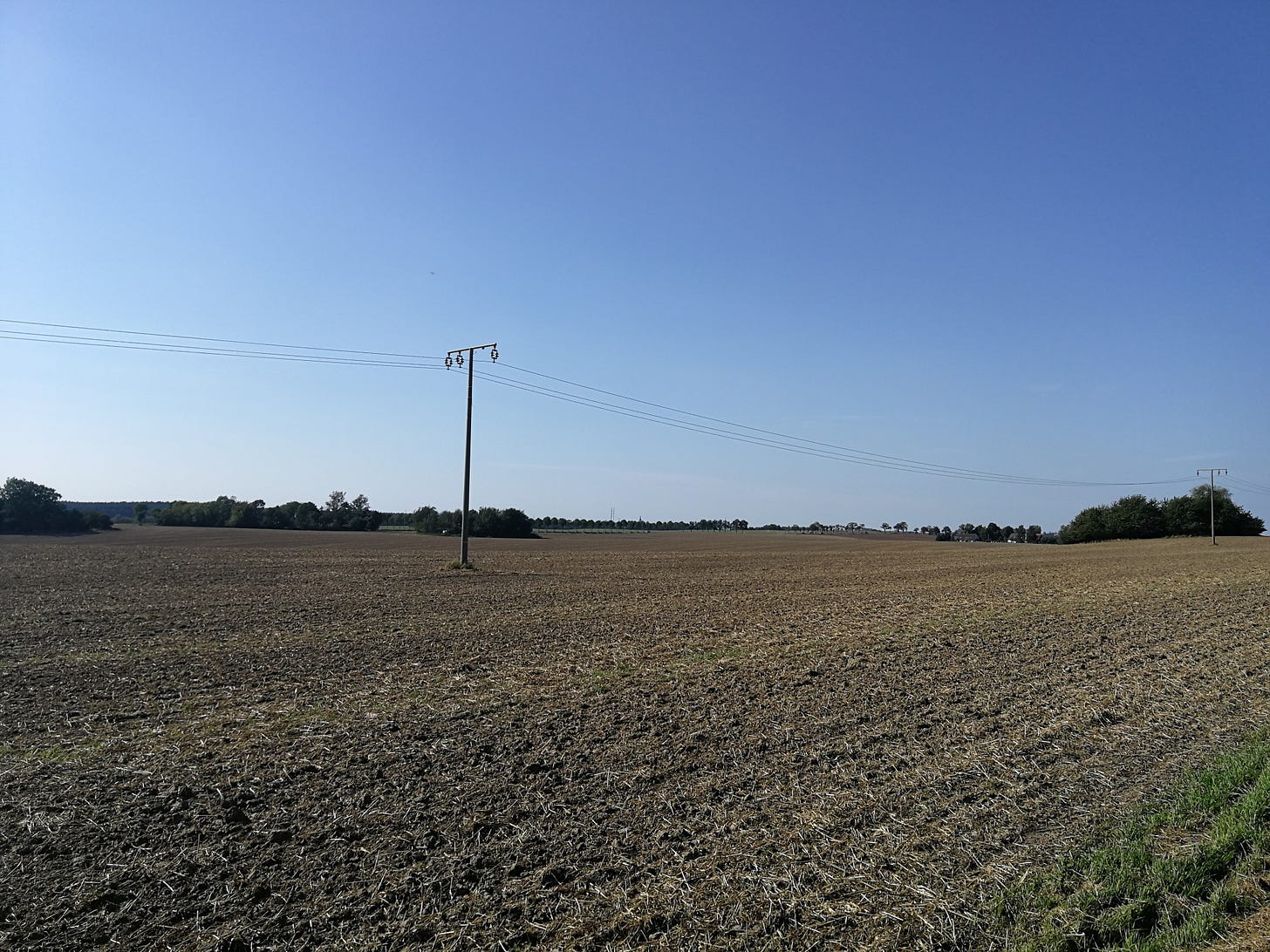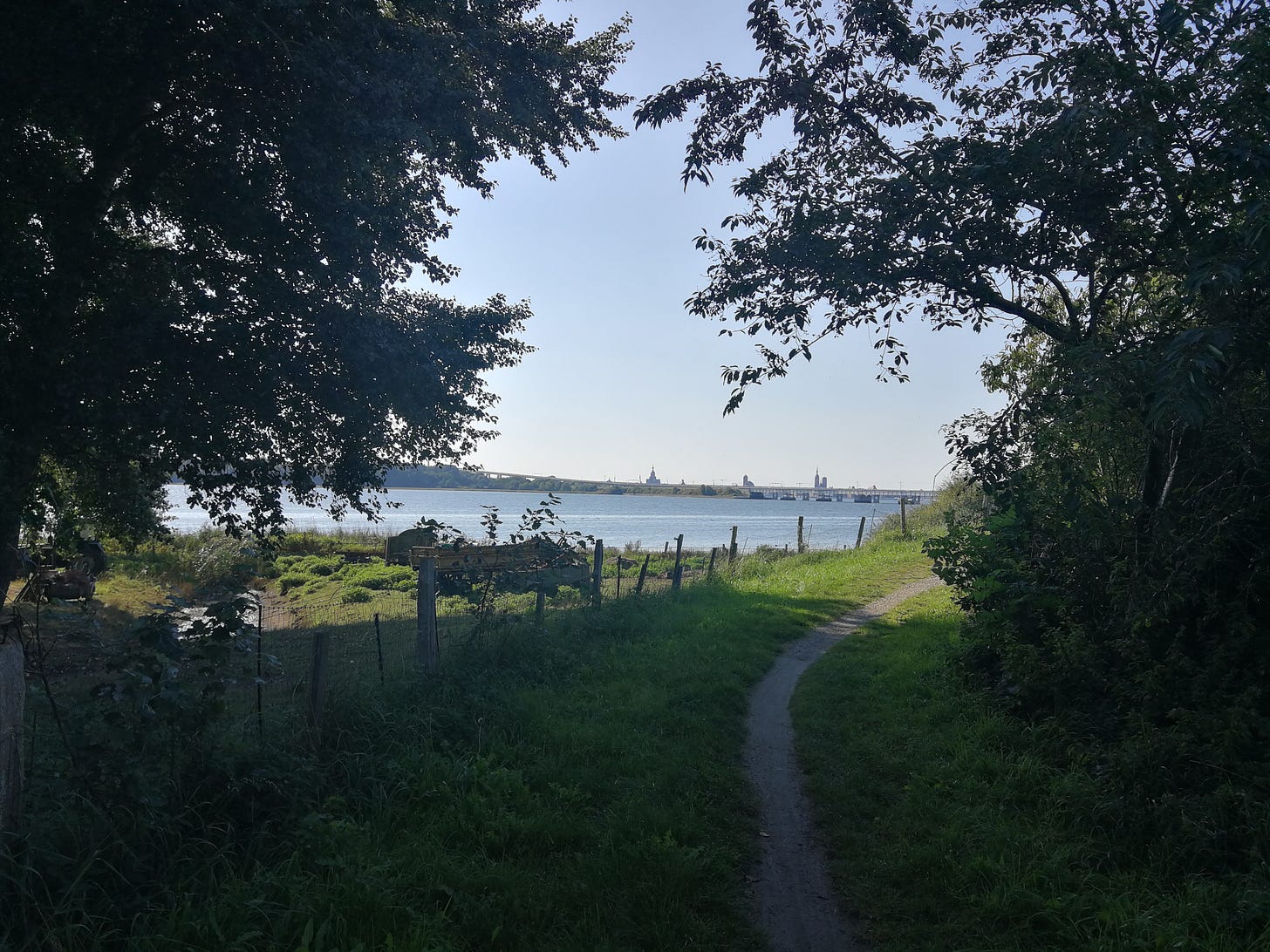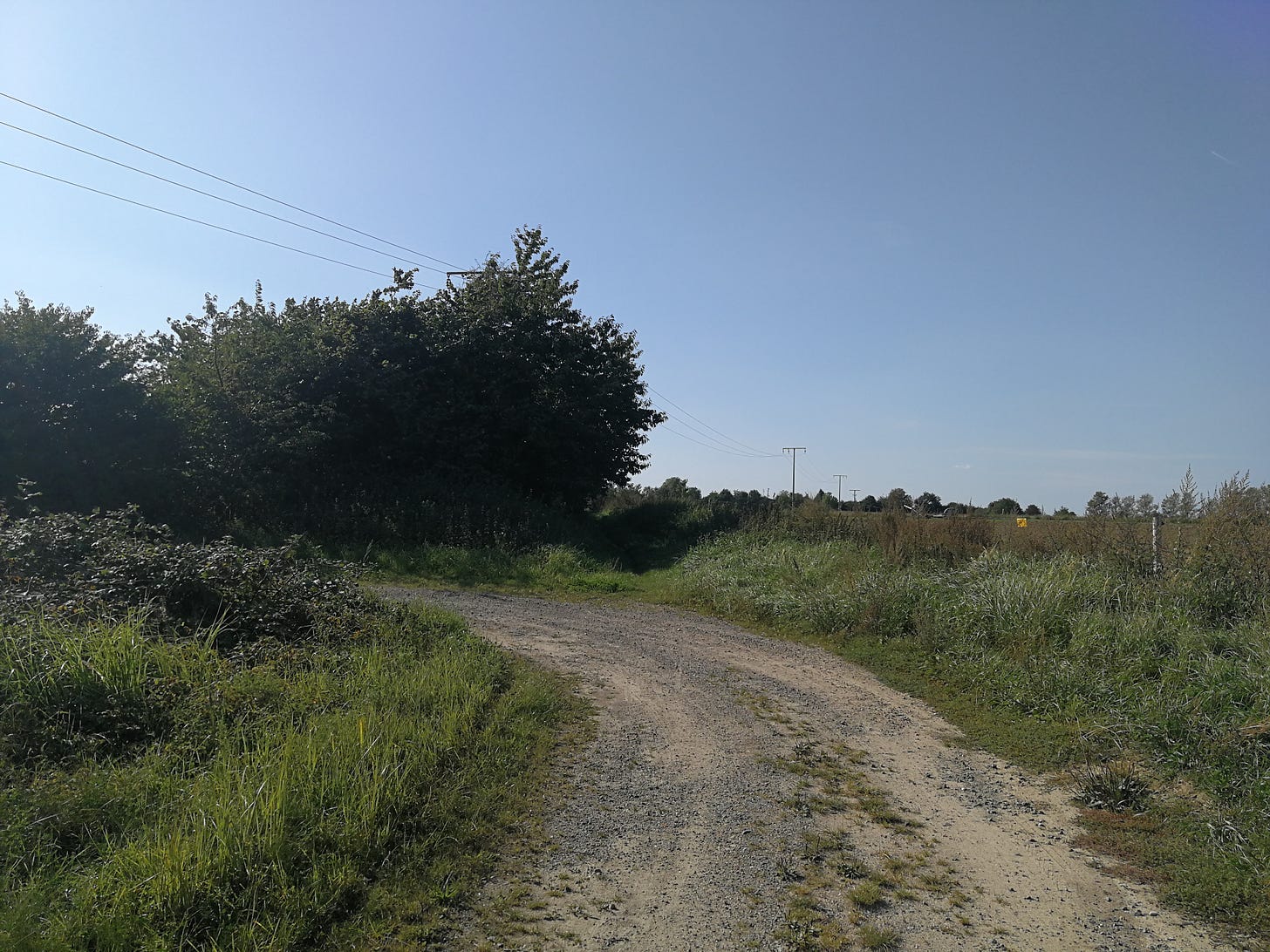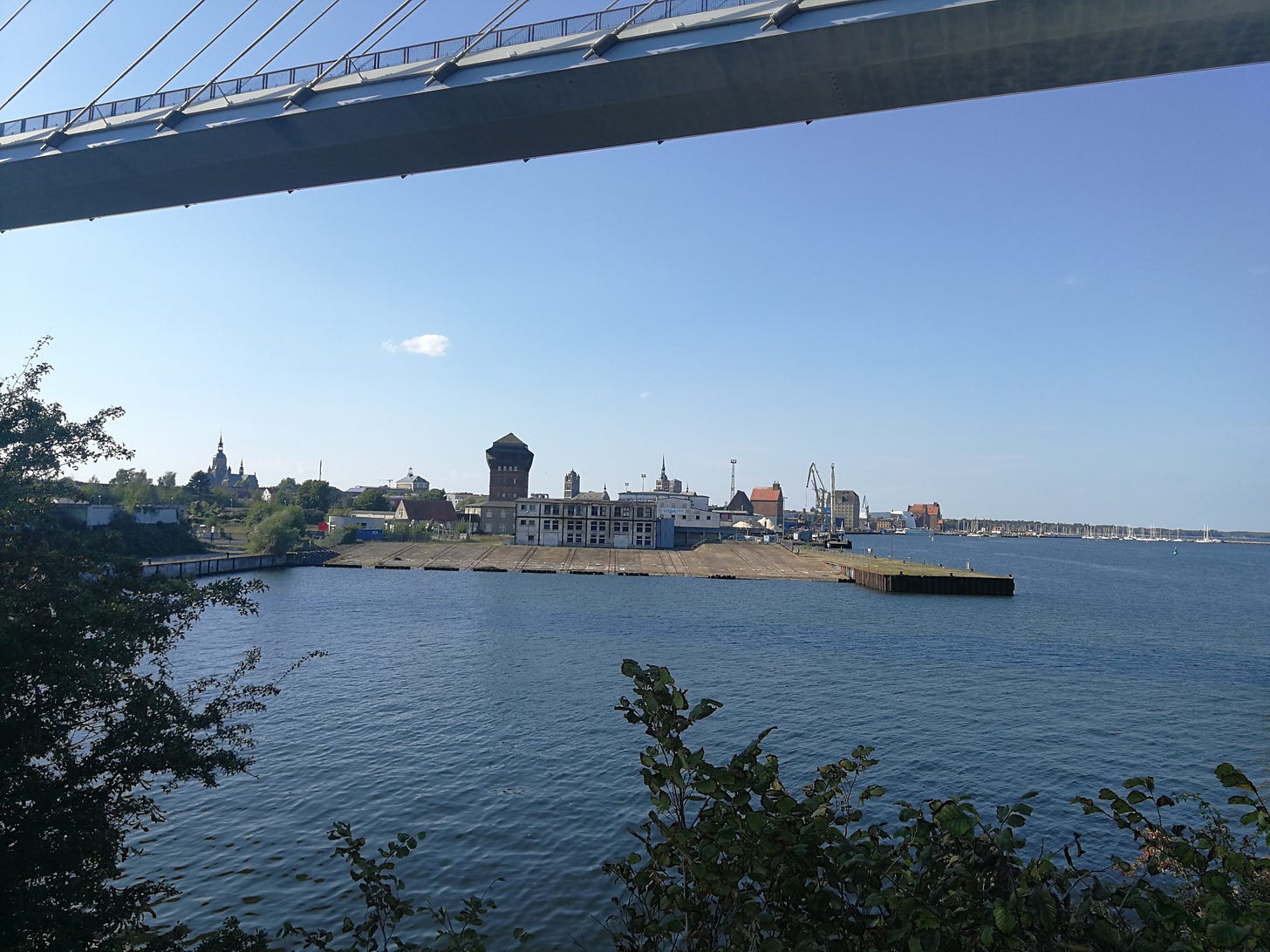Section Hike: E10, Kap Arkona → Stralsund, Day Six
Hiking along the Baltic Coast on the Island of Rügen
As I mentioned in my previous post, today would end up being the longest, and one of the most difficult, days of the hike overall. This wasn’t because the terrain was particularly challenging, but because I decided by midday that I was making good enough progress that I could push through all the way to Stralsund, and save a day of camping. Because of that, I ended up hiking far more distance than I had planned—almost 35km—which ended up being really hard on my feet.
I’d been developing some sizable blisters on the undersides of both pinkie toes—a consequence of my pack-weight, and a narrow toebox on my boots—that by this time were two layers deep and covering most of the undersides of both toes. I didn’t think an extra overnight would reduce them, and so it seemed like a better idea to get back home as soon as possible so I could rest and recover. That, and the somewhat unorthodox overnight (camping on the grounds of a forest hotel), made me decide to make a run straight to the train station. My original route was to take me to Prosnitz, just southeast of Gustow, here; but since I decided to make a run all the way to Stralsund, I skipped the spur off to the hotel, and continued with my seventh day’s route, here.
But that was going to be later in the day. In the morning, I had a quick breakfast at the campground, watching the sun rise over the water.
Once I was packed, I retraced my route back along the road leading off the Zudar peninsula, reached the crossroad, and rejoined the E10 to continue westward.
A lot of the trail here is along bike paths: the island is a popular holiday destination, and bicycle tourism seems to be the primary means of traveling around to see the various parks and scenic villages. Much of my route today is a mixture of farm roads, bike paths, or just normal paved roads between villages. The short video clip below gives a good idea of the surroundings, and also how I’m frequently just walking down a road used mainly by cars. This is the road crossing over the inlet to the Mellnitz-Üselitzer Wiek, a bay surrounded by wetlands between the villages of Mellnitz and Üselitz.
From here, I hike along a mixture of farm roads and bike paths, and it isn’t long before I reach the village of Sissow, and a crossroad with a trail leading down into a small wooded area with the hotel. But I kept going; I’d have one more crossing with a trail that would get me to the hotel, so I did a bit of hard thinking to be double sure I wanted to try tacking on another 15km to get to Stralsund.
But of course, as I said, I decided to keep going. I reached Gustow, the next village along my route, by 13:00. There was plenty of time to get to Stralsund, even if I had to slow down a bit. I think it’s also around this time, maybe an hour further down the trail, that both blisters on my pinkie toes burst, which is extremely painful to walk on, but only for brief stretches. It comes and goes, and I’m still making progress, so I keep going.
About an hour later, I can start seeing the belfries of Stralsund’s churches coming into view across the water:

Much of the remaining trail is dirt or paved road, but right at the end of my trip, before I take the sidewalk along the Rügendamm (the Strelasund—the sound separating Stralsund on the mainland from the island of Rügen—is crossed by two separate bridges: the Rügenbrücke is a large cable-stayed bridge for auto traffic, while the Rügendamm is a much lower bridge for rail traffic, some limited autos, and a combined bike and pedestrian sidewalk), the E10 has one last surprise for me.
A dirt and gravel road leads down toward the coast, but ends at a turnaround, and once again a small footpath disappears into the brush, and when I follow it I’m hidden from everything else around me, walking along a grass path surrounded by bushes and shrubs.
I rejoin a road for a bit, and then again turn a corner and find myself on a narrow footpath, separated from roads and villages (this is the picture at the top of this article). This time the trail runs along a park, so there are picnic benches and a few families out for an afternoon. Gradually, Stralsund is coming into view.
The trail proper ends at the underpass for the rail viaduct, and so I cross the street onto a sidewalk, and leave the island for the mainland across the Rügendamm. It’s slow going because of my feet, but I cross the bridge in time to see the bascule bridge at the other end raised for boat traffic to pass through.
Finally, after entering the city proper, the E10 runs along city sidewalks, where it eventually crosses the E9—the long coastal trail that circles Europe to the west and north—at a traffic circle.

Curiously, there’s no signage for either trail that I can find here. I think I imagine these trails as having prominent markers at crossings, because of the immense distances they cover and the enormous scale of the network, but I forget that they are, in a lot of places, simply a route along a road, or through a town.
But this otherwise unassuming traffic circle is, after six days and 120km, the end of my journey. I’m walking gingerly, and tired overall, so I’m happy to take a city bus to the train station, and wait there for the next train back home. I learned a lot on this trip that will help me prepare for longer hikes along the E10, or other trails of the E-Path network, but that’s going to come later. As I finish writing this, it’s mid-October, and the hiking season for many of the trails in Germany is almost finished: I’m just finishing packing for a return tomorrow to the Forststeig (that superb hiking trail along the German-Czech border, just southeast of Dresden), as these are the last couple weeks that the trail is open.
Come November, I’m going to be working on fixing some of the things about my gear that I didn’t much like, and doing a bunch of shorter hikes around Berlin. I also shot a lot more video of this hike, and I’m going to be putting together a few videos of the trip and posting them to my Youtube channel. That will come later.
If you’ve made it this far, I hope the account of the trip was interesting to read, and I hope you come back to read about the trips I have planned for the future. There are many more to come.
Happy trails.








